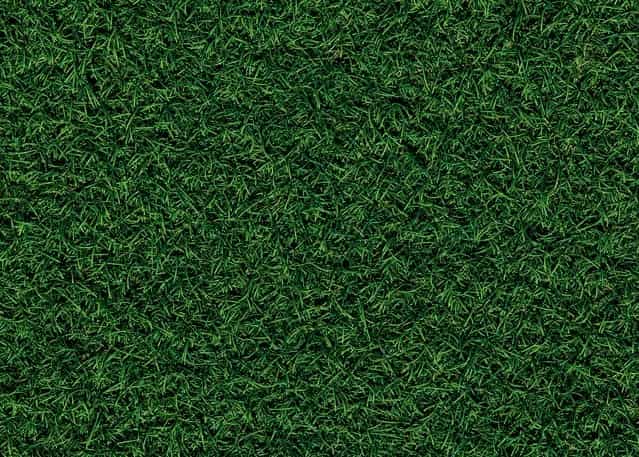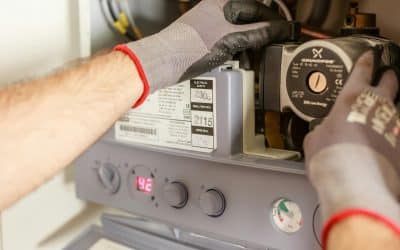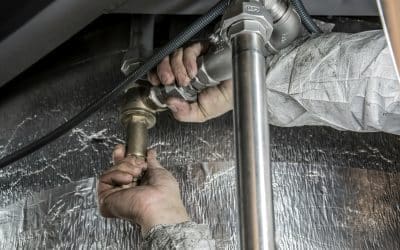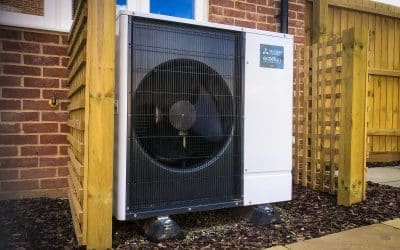With the increasing awareness of the different types of sustainable technologies available in the market, many major HVAC systems have slowly found their way into commercial and domestic spaces with heat pumps being the go-to choice for many.
When it comes to these efficient HVAC systems, many may know the types of heat pumps available like ground source and air source heat pumps. However, understanding the different parts of the same may not be something people may be aware of.
That said, if you’re looking to know more about a heat pump, we’ve got you covered.
In this blog, we’ve put together a short guide on the different components of a heat pump you need to know to help you better understand how the system works.
Without further ado, let’s take a look!
1. The Main Pump
Whether it is a GSHP or an ASHP, the main pump of this sustainable technology is where everything takes place.
The heat absorption, whether it is from the air or the ground, is essential to get the system working to heat the premises. This absorbed heat is then passed onto other different components inside the pump along with the refrigerant, which is then used to heat your home.
While the process usually is automated, one important thing you need to make sure of is to keep checking on its maintenance. From issues with the outdoor fan to the pump itself working non-stop, the main heat pump needs to be checked on regularly so that it stays in good condition.
If you’re looking for experts to help you with the service and maintenance of your heat pump, JL Phillips can help you with that.
To find out more about our services, get in touch with us today!
2. The Evaporator
The evaporator is a low-temperature heat exchanger where the refrigerant enters as a liquid, which then absorbs heat from the heat source through evaporation and leaves a low-temperature vapour.
The refrigerant is forced by the expansion valve and the suction effect of the compressor to change it from liquid to gas.
Since this requires a lot of heat, the evaporator gets cold and tends to draw heat from the surroundings. However, due to its role in changing the form of the liquid or gas, it is one of the most important components of a heat pump.
3. The Condenser
The condenser is the outer portion of the heat pump that collects or releases heat depending on the temperature outside. It is usually made of copper tubing with aluminium fins or all-aluminium tubing so that the heat can be transferred rapidly.
When it comes to the condenser, the refrigerant enters as a high-temperature vapour and leaves as a high-temperature liquid.
The condenser fan then circulates air across the coils to facilitate heat transfer. Here the refrigerant is compressed and passed across the coils. However, one thing you need to keep in mind is that exterior blockage or obstructions can cause damage in the condenser.
This is where replacing the part entirely will prove to be expensive, so ensure you have a heating expert to regularly keep a check on it.
4. The Compression And Expansion Valve
The compressor compresses the low temperature and low-pressure gas into a high-pressure gas with a high temperature. It creates a low and high pressure which causes the liquid to change to gas and back.
The high-pressure refrigerant liquid from the condenser is transported through the expansion valve which adjusts the pressure and temperature for the heat pump.
This means that all the different components of a heat pump need to work efficiently in a continual cycle to effectively produce sufficient heat for your home or commercial property.
To Conclude
While a heat pump is an excellent HVAC system, fully understanding how it works ensures you’re on top of servicing and maintenance whenever required. This further helps you ensure that the system works well for a longer period of time.
Whether you have an air source or a ground source heat pump installed, knowing about these basic components can help you get an overall understanding of how the system works.
Contact JL Phillips For Expert Heat Pump Installation And Maintenance
Now that you know the different components of a heat pump, keeping them well-maintained can ensure that these systems stay in good condition for a long time.
From expert installation of air source and ground source heat pumps to other sustainable technologies, with us, you’re ensured quality service.
To find out more, get in touch with us today!





